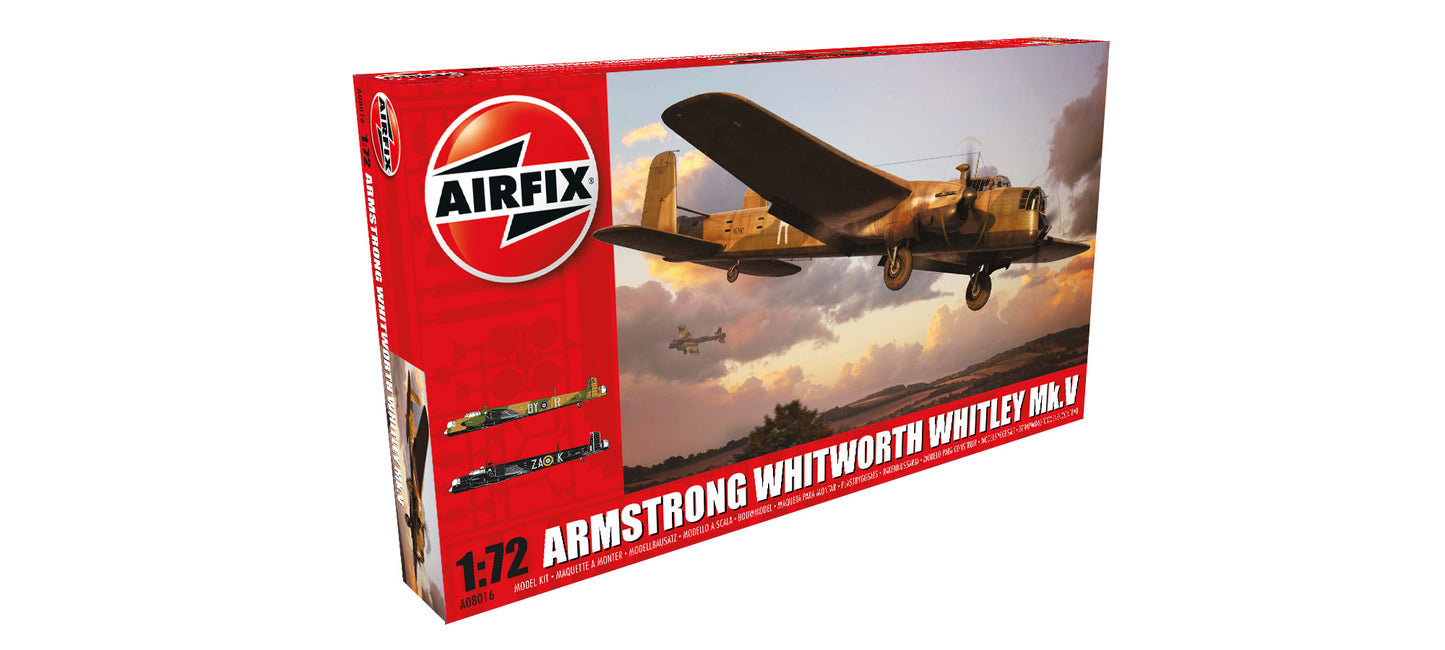1
/
of
1
Airfix 1/72 A08016 Armstrong Whitworth Whitley MkV
Airfix 1/72 A08016 Armstrong Whitworth Whitley MkV
Airfix
Regular price
£37.79 GBP
Regular price
£41.99 GBP
Sale price
£37.79 GBP
Unit price
/
per
Taxes included.
Shipping calculated at checkout.
Couldn't load pickup availability
Airfix 1/72 A08016 Armstrong Whitworth Whitley MkV
The Whitley first entered service with No. 10 Squadron in March 1937, replacing Handley Page Heyford biplanes. By the outbreak of the Second World War, seven squadrons were operational, the majority flying Whitley IIIs or IVs, as the Whitley V had only just been introduced. With the Handley Page Hampden and the Vickers Wellington, Whitleys bore the brunt of the early fighting and saw action on the first night of the war, when they dropped propaganda leaflets over Germany. Among the many aircrew who flew the Whitley in operations over Germany, was Leonard Cheshire who spent most of his first three years at war flying Whitleys. Unlike the Hampden and Wellington—which met specification B.9/32 for a day bomber—the Whitley was always intended for night operations and escaped the early heavy losses received in daylight raids on German shipping, early in the war. With Hampdens, the Whitley made the first bombing raid on German soil on the night of 19/20 March 1940, attacking the Hornum seaplane base on the Island of Sylt. Whitleys also carried out Operation Haddock the first RAF raid on Italy, on the night of 11/12 June 1940.As the oldest of the three bombers, the Whitley was obsolete by the start of the war, yet over 1,000 more were produced before a suitable replacement was found. A particular problem with the twin-engine aircraft, was that it could not maintain altitude on one engine. Whitleys flew 8,996 operations with RAF Bomber Command, dropped 9,845 tons (8,931 tonnes) of bombs and 269 aircraft were lost in action.
The Whitley was retired from front line service in late 1942 but it continued to operate as a transport for troops and freight, as well as for paratroop training and towing gliders. No. 100 Group RAF used Whitleys to carry airborne radar and electronic counter-measures. In February 1942, Whitleys carried the paratroops who participated in the Bruneval raid (Operation Biting) in which German radar technology was captured from a German base on the coast of France.
The Whitley V was the main wartime production version based on the Mk IV, modified fins, leading edge de-icing, manually operated tail and retractable ventral turrets replaced with a Nash & Thompson powered turret equipped with four .303 in (7.7 mm) Browning machine guns, tail fuselage extended by 15 in (381 mm) to improve the field of fire. First flew in December 1938, production ceased in June 1943: 1,466 built.


